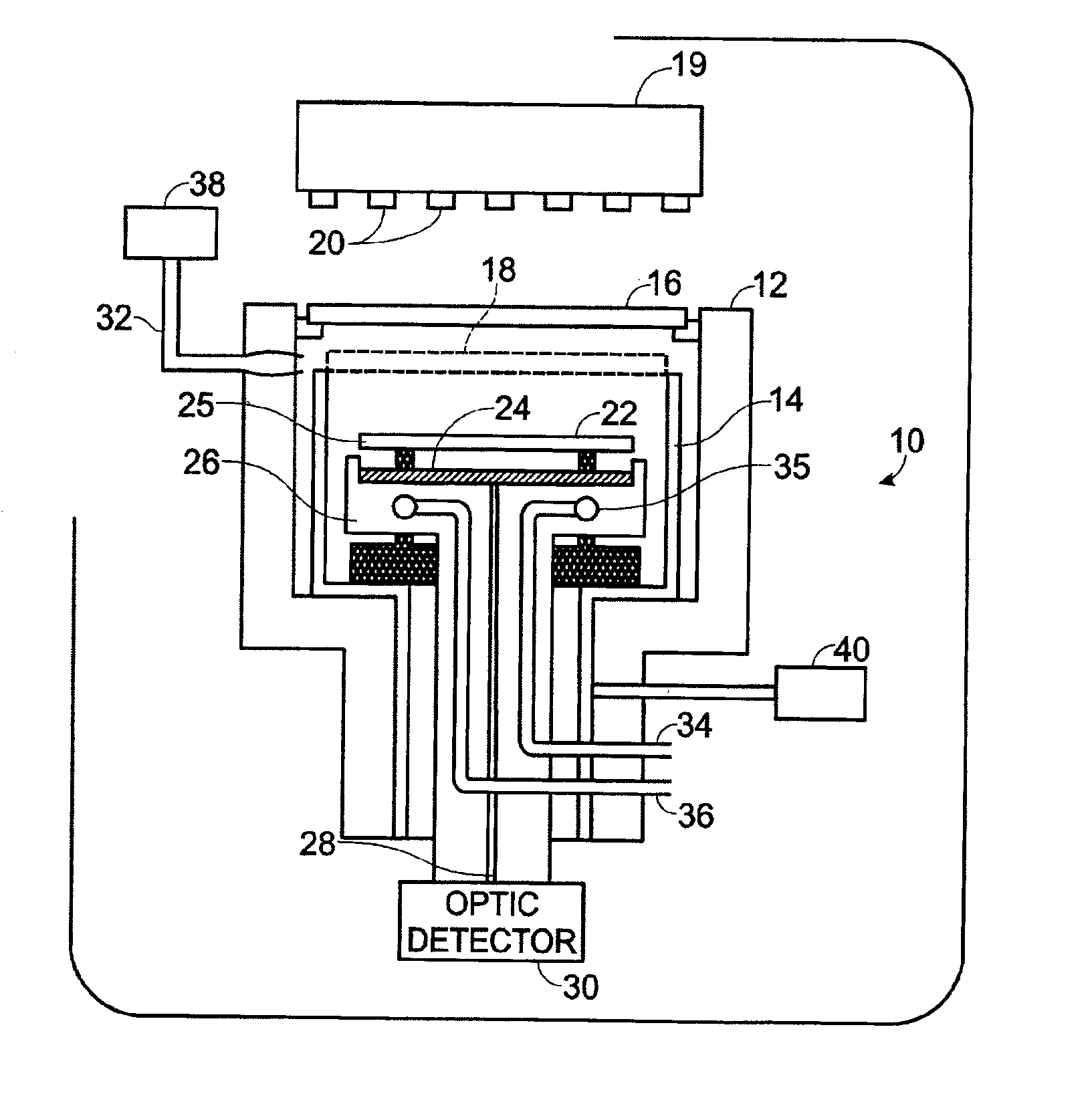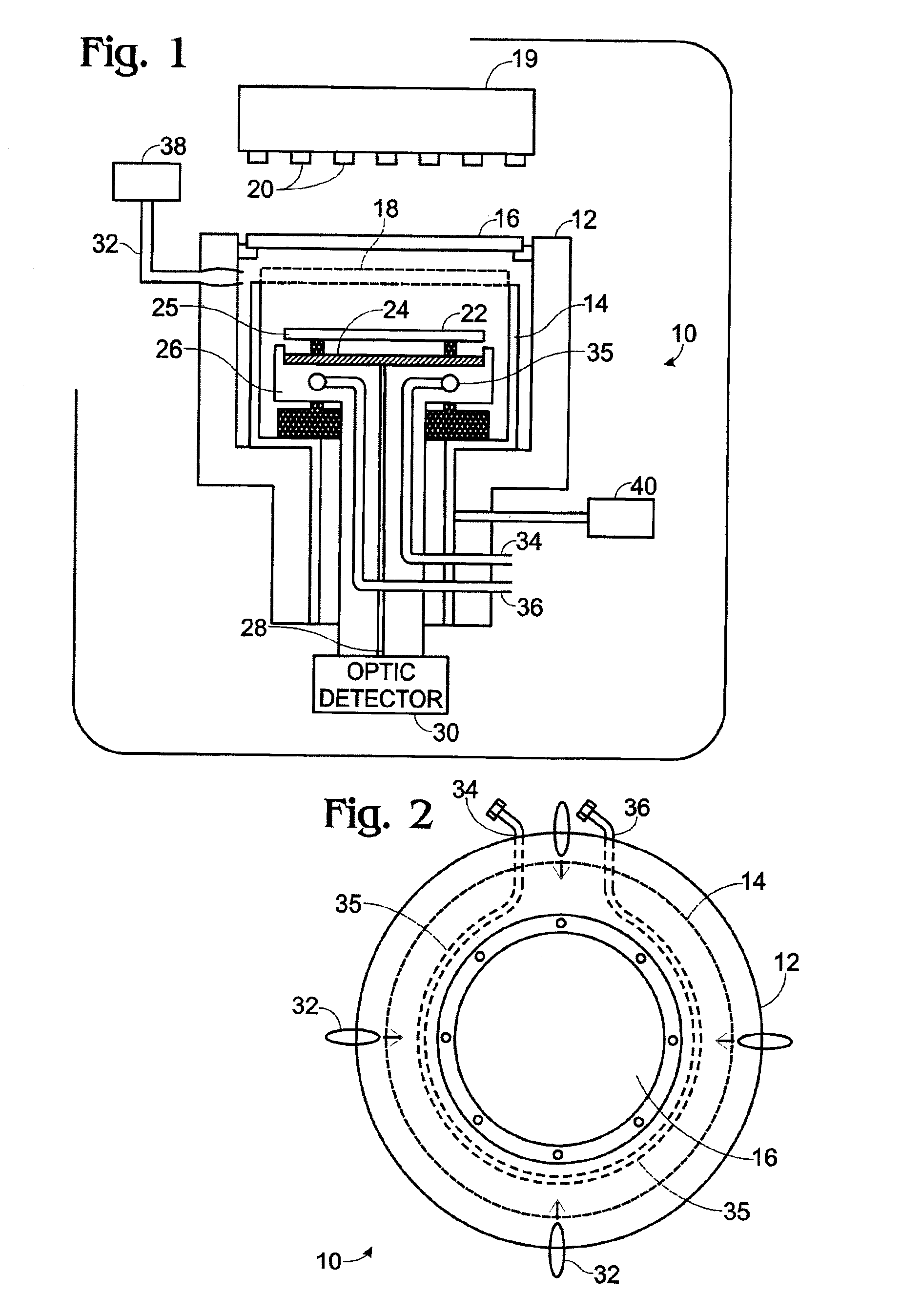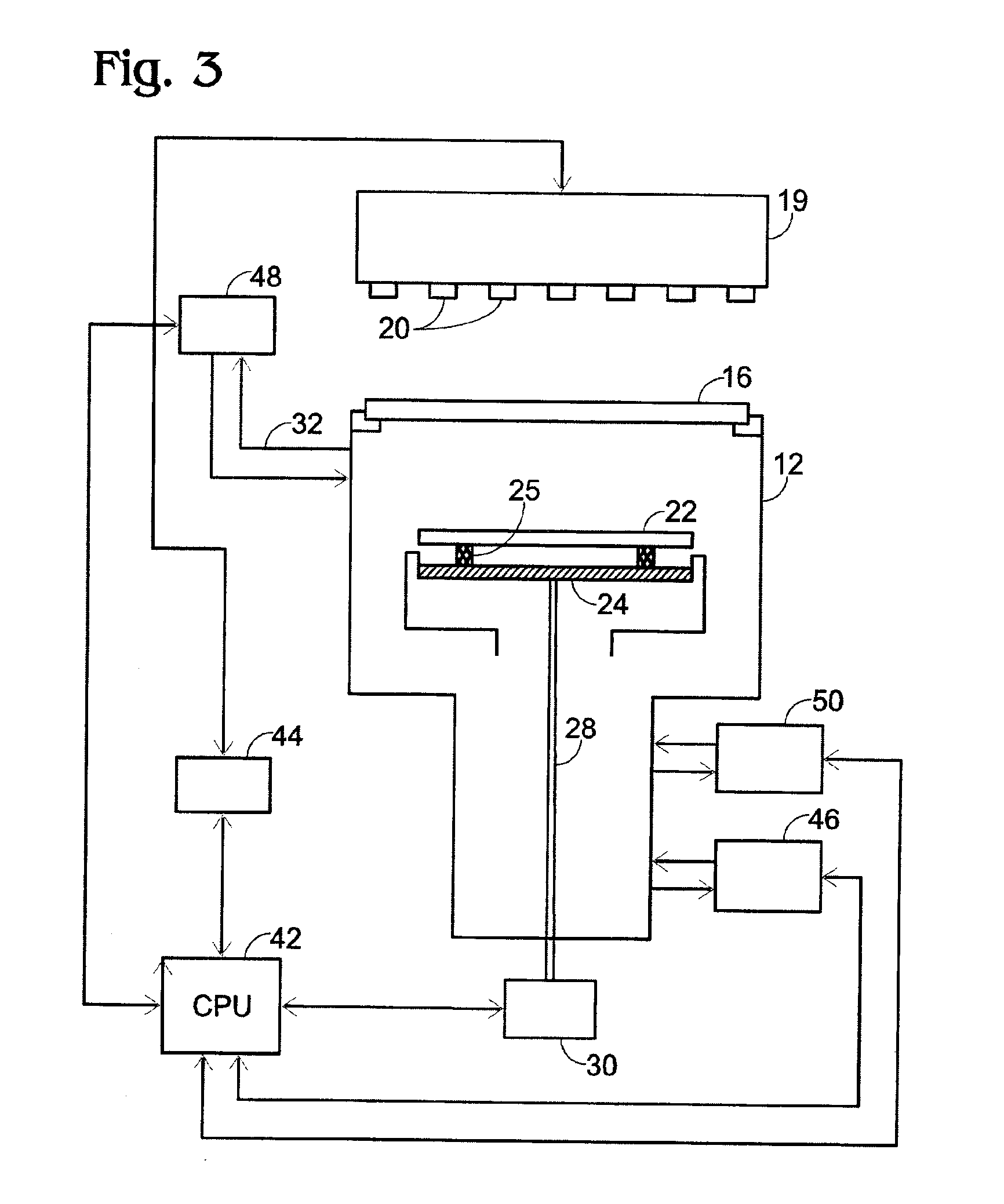Method of processing selected surfaces in a semiconductor process chamber based on a temperature differential between surfaces
a technology of semiconductor process chamber and temperature differential, which is applied in the direction of cleaning hollow objects, lighting and heating apparatus, and using liquids to clean objects, etc., can solve the problems of rtp system certain disadvantages that have not been adequately addressed, defective devices being formed on wafers, and prolonged heating and cooling of wafers
- Summary
- Abstract
- Description
- Claims
- Application Information
AI Technical Summary
Benefits of technology
Problems solved by technology
Method used
Image
Examples
example embodiment
OF THE INVENTION
Cycled in Situ Clean of an RTCVD Process Chamber Using NF3 Gas
[0063]The following is one example embodiment of the invention, which was tested by the inventor. The example is intended to help illustrate and further describe the foregoing principles of the invention. The information in the example embodiment is believed to be reasonably complete and accurate. Notwithstanding the inclusion of this example, the inventor believes the patentability of the present invention has been established independently of this example by the foregoing description and attached figures.
[0064]The following testing was carried out to determine if NF3 gas could be used to clean an AGI Integra Pro clustered RTCVD process chamber of polysilicon deposits. The Integra Pro is manufactured by AG Associate Israel. The test evaluated whether the cleaning process would cause damage to the temperature measurement system or other components of the process chamber. The test also evaluated the impact ...
PUM
| Property | Measurement | Unit |
|---|---|---|
| Temperature | aaaaa | aaaaa |
| Temperature | aaaaa | aaaaa |
| Temperature | aaaaa | aaaaa |
Abstract
Description
Claims
Application Information
 Login to View More
Login to View More - R&D
- Intellectual Property
- Life Sciences
- Materials
- Tech Scout
- Unparalleled Data Quality
- Higher Quality Content
- 60% Fewer Hallucinations
Browse by: Latest US Patents, China's latest patents, Technical Efficacy Thesaurus, Application Domain, Technology Topic, Popular Technical Reports.
© 2025 PatSnap. All rights reserved.Legal|Privacy policy|Modern Slavery Act Transparency Statement|Sitemap|About US| Contact US: help@patsnap.com



